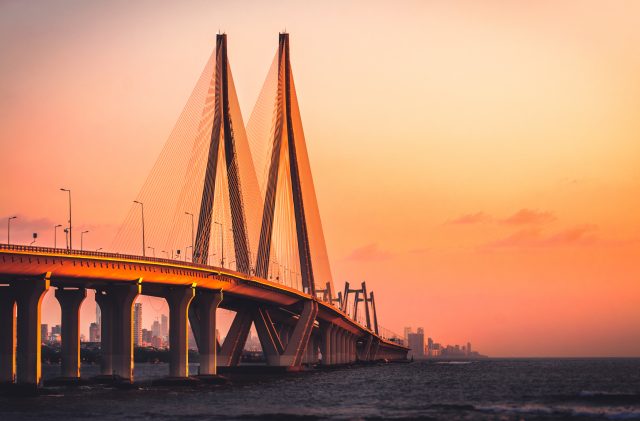This website uses cookies so that we can provide you with the best user experience possible. Cookie information is stored in your browser and performs functions such as recognising you when you return to our website and helping our team to understand which sections of the website you find most interesting and useful.
Wine brands refusing to target India are missing a trick
Curious, aspirational and looking to enjoy their drink, Sonal C Holland MW breaks down what makes consumers in India a prime, yet largely untapped, resource for wine brands.

In the 17 years that I have spent working in the Indian wine industry, never before have I seen so much interest in the country’s market among wine producers across the world. Every export-focused wine brand is keen to get its foot in the door and capture this promising territory, in the hopes of establishing long-term partnerships.
In India, wine is perceived as a healthier alternative to strong liquor. It is seen as a symbol of success, luxury and sophistication, and socially it is often the most acceptable drink. No other alcoholic beverage enjoys this trilogy of appeal among consumers, and these three factors have worked remarkably well in wine’s favour.
Over the past decade, wine has consistently grown to become a mainstream beverage in India, and is now on par with beer, whisky, gin, or vodka at gatherings where alcohol is served.
A common fixture on menus at restaurants and bars all over India, its popularity has been propelled by a rise in disposable income, increased exposure to the Western lifestyle through travel, an influx of expats in the country, and positive portrayals in print media, OTT platforms (such as YouTube), and movies.
Curious About Wine
India is one of the youngest countries in the world, with nearly 50% of its 1.4 billion population under the age of 25. Global brands are vying to gain the attention of this youthful population that has a growing amount of cash at its disposal. India is the third-largest alcohol market in the world, with an estimated 100 million more people reaching the legal drinking age every five years.
Unlike in Western countries, where younger people are growing “sober curious”, India’s youth is eager to experiment with various styles of alcohol. Young Indians today seek exciting drinking experiences, and have the means to spend more on a bottle of wine, as I discovered authoring a report for Wine Intelligence.

They also enjoy beverages that offer variety in terms of style, taste and production method, like innovative cocktails and craft beer.
Wine fits this repertoire perfectly. Indian millennials are attracted to wine’s sophisticated image, making it socially acceptable for them to enjoy a drink in front of their families without raising eyebrows. Many Indians in the country live in a joint set-up, even in the urban sector, where older family members are often likely to disapprove of alcohol consumption at home. But wine’s relatively low alcohol level and its softer image have broken this barrier, and made it possible for younger men and women to enjoy a drink with their families.
Women drive Wine Trend
India is home to nearly 700 million women, which means that every tenth person on the planet is an Indian woman. This is a demographic that cannot be ignored, especially because research shows that Indian women are embracing wine over other alcoholic beverages.
According to India Wine Insider – our report on consumer trends and preferences in India – an equal number of women as men drink wine in the country. Importantly, they also have a higher propensity to buy a bottle than their male counterparts.
Women face less scrutiny when seen drinking wine due to its softer and more elegant image, thereby reducing the perceived social stigma around women who drink. In a way, wine has democratised drinking for Indian women, allowing them to join men for a drink after work or at parties.
A Shift To Wine
The older drinking population in India is known to have an affinity for spirits. However, declining health and poor lifestyles are forcing many older people to make changes in their drinking habits, either by stopping altogether or switching to something lighter.
Doctors in India tend to recommend wine, and advise moderation to heavy whisky drinkers who need to cut down on alcohol consumption but are struggling to give it up altogether.
The older age bracket of consumers also features well-off people who work in positions of influence. For them, wine is a means of maintaining their social status or offers them a chance to enhance it further. They want to be seen spending a good amount of money on procuring expensive wines or being a part of high-end wine dinners.
We are seeing a rise in the number of such well-heeled consumers who identify as serious wine drinkers or collectors. These people seek exclusive wine experiences that put them in a clique of prestigious enthusiasts.

Smaller Cities
Several domestic brands and some large-volume international brands are now available at retail stores in smaller cities in India. These places have witnessed an expansion of the hospitality sector in the past decade or so, along with a rise in income, which has generated an aspiration for an urbanised lifestyle.
India’s largest winery, Sula Vineyards, has gone on record saying that the company is turning to smaller cities in India to drive growth. As more people in these towns become health-conscious and more aware of wine, consumption is likely to jump even further.
As domestic wine brands move inwards, the metro consumers, who are past this phase of exploring wine, are now looking to broaden their experience, and are turning to international brands to refine their tastes, thus presenting them with a big opportunity to establish brand recognition.
A Symbol Of Luxury
India is the world’s fifth-largest economy, and is on track to become the third-largest by 2030, according to a report by S&P Global Ratings.
This growing affluence has given Indian consumers a taste for the finer things in life.
Wine’s association with luxury has also given it a presence at affluent Indian weddings. The Indian wedding industry touched US$75 billion (HK$587bn) in the 2023-24 wedding season, and it isn’t uncommon to see top wines from Penfolds, Dom Pérignon, or Tignanello being poured at lavish weddings where budget is never a constraint.

Challenging Landscape
This brings us to why India remains a difficult market to succeed in, despite wine’s growing popularity there. Awareness regarding wine is at an elementary level, even among urban or elite consumers who may pretend to know more than they actually do.
The majority of consumers are more focused on wine’s pricing and taste; since it is not an indigenous beverage, consumers often have only a basic understanding of the right etiquette to purchase, order, serve, or drink wine, nor do they know about wine regions and varieties in detail.
Thus, the wine industry must ensure that consumers aren’t overwhelmed and eventually driven away by the complexity of the beverage if they want it to succeed across all spheres of the market.
Consumer landscape aside, foreign producers additionally have to struggle with high import taxes (a staggering 150% on all alcoholic beverages), which have been a grievance since time immemorial. Wine is controlled by each state in India, with differing label registration laws in every region, thus making importing wine and establishing its nationwide presence a mammoth task.
Thankfully, India has made some headway by establishing an Economic Co-operation and Trade Agreement with Australia, which has lowered the import duty on wines among other commodities, from 150% to 75% now, with plans to gradually reduce it to 25% over the next 10 years. Similar agreements with other countries like the UK and US are in the pipeline, giving exporters every reason to be hopeful.
India might be a challenging market for wine but, with all the fundamentals necessary for success, I choose to wear rosé-tinted glasses. The Indian wine market may be nascent, but it is evolving at a rapid pace, and its potential is fast attracting the interest of wine exporters from around the world.
As the Indian wine industry gains momentum and wine is desired by a wider spectrum of Indian consumers, I would invite exporters from around the world to review the opportunities that lie in the Indian market with a fresh pair of lenses. Gaining a deeper understanding of the Indian wine market, developing a strong nexus with its important stakeholders, and promoting awareness through structured education programmes will help to build businesses which are at the forefront of driving India’s wine revolution.
Related news
A 'challenging yet surprising' vintage for Centre-Loire in 2024

